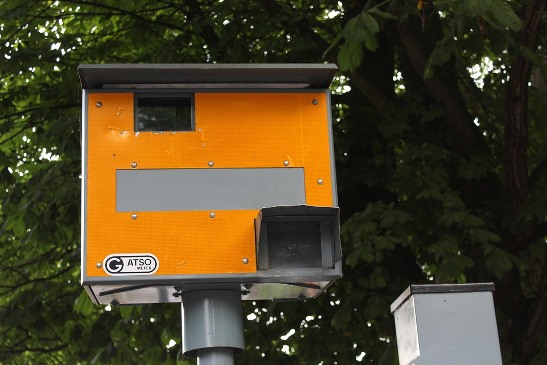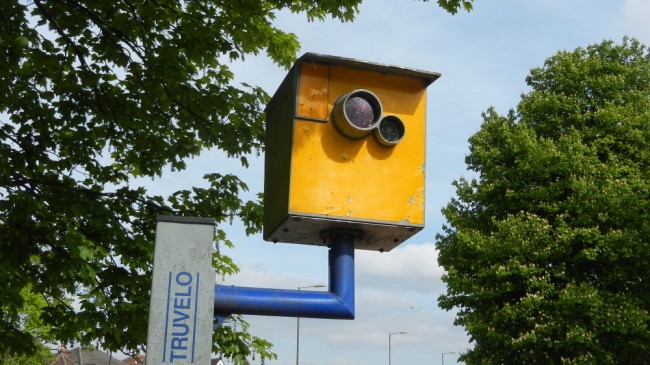The traffic cameras in the UK were supposedly installed to increase roadway safety. Whether motorists consider them to be a positive influence or a negative one, they’re now a fixture on many roadways. Whether you spot them at traffic lights or see them while on the motorway, drivers today have to contend with the fact that police officers – who have endured funding cuts that limit staffing capacity –now watch and respond to traffic violations remotely.
You may consider traffic cameras as a helpful reminder of the roadway laws. Alternatively, you may find traffic cameras a way for your local government to generate additional revenue. Either way, drivers in the UK today need to learn how to interact with these digital devices. Otherwise, the arrival of a ticket in the mailbox will be an unexpected displeasure.
The History of UK Traffic Cameras
M40 played host to the UK’s first traffic camera. This speed camera was installed in 1991 and utilized rolls of film to monitor passing traffic.
Nowadays, there’s no need for officers to develop traffic camera footage. Instead, traffic camera footage appears in police stations around the UK courtesy of a secure cloud or accessible Wi-Fi.
Typically, both speed and traffic cameras flash when they detect a car passing them. However, new developments in camera technology allow both variations on the traffic camera to remain discreet when monitoring passing traffic. This allows these sorts of cameras to detect illegal driving behaviors before drivers can spot the devices and correct themselves.
Types of Traffic Cameras
There are a number of different traffic cameras in operation across the UK. These variations include:
- Gatso Speed Cameras – The Gatso Speed Camera was the first camera to make its way onto motorways in the UK. Created by a Dutch company, Gatso cameras face backward to detect better the license plates of cars, motorcycles, and other vehicles that might be speeding. These cameras are among the easiest to spot while on the road courtesy of their yellow paint. Though officers have tried to hide these cameras behind natural obstacles, they are legally required to maintain the cameras’ original color. If you want to spot a Gatso camera, either look for their distinct coloration or keep an eye out for dashed roadway lines. These dashed lines allow anyone observing Gatso camera footage to detect the distance a vehicle travels over the course of a few seconds and thereby estimate how quickly the car in question is going.

- Truvelo Cameras – Truvelo cameras are made in South Africa and look relatively similar to Gatso Cameras. Unlike the Gatso Camera, however, Truvelos face forward. They make use of a filtered flash to take photos of vehicles’ license plate numbers without blinding drivers. That said, motorcycle drivers are more likely to get away with speeding if they encounter a Truvelo camera. You’ll be able to spot a Truvelo camera courtesy of the white squares that painted on motorways near these cameras’ locations.

Photo Attribution: Invisible Property licensed under this Creative Commons License.
- HADCE Cameras – Also among the most commonly used cameras in the UK. The HADCES acronym stands for Highways Agency Digital Enforcement Camera System. You’ll most frequently spot these types of cameras on the UK’s new smart motorways. Like Gatso cameras, these cameras face backward and can more easily take photos of drivers’ license plates than forward-facing cameras. Unlike Truvelos and Gatsos, however, these cameras are not painted yellow. Instead, you’ll be able to spot them courtesy of their two-housing structure. You should also keep an eye out for painted lines on the side of the road to give you an idea of where a HADCE camera might be located.
Interacting With Traffic Cameras
It’s your responsibility when driving on the UK’s motorways to obey the country’s driving laws and to keep the safety of yourself, any passengers in your car, and other drivers in mind. That said, it can be difficult to know how to interact with traffic cameras.
You’ll know for certain that a traffic camera has caught you if you’re notified of a traffic violation by via Note of Intended Prosecution (NIP). These notifications will arrive within fourteen days of the initial violation.
The consequences of speeding in the UK include:
- Three points added to your license
- A minimum fine of £100 and a maximum of £2,500
If your driver’s license happens to be free of points, UK officials may offer you the chance to attend a speeding awareness course to avoid breaking your clean record.
You should be aware that not all traffic cameras flash when they take a picture of your car. Keep your eyes peeled while on the road, though, and try to stay under the speed limit while on the motorway. You’ll have a chance to slow down or otherwise correct your behavior if you spot a traffic camera. Even so, you’ll have to do so quickly or else face the consequences.
Giles Kirkland is an automotive industry researcher and writer. He focuses mainly on the technological, scientific, and sustainable aspect of the automotive. As the world evolves faster than ever, he enjoys keeping track of all current developments and sharing his knowledge and experience with other motoring and technology enthusiasts across the globe. You can find him on Twitter and Facebook.
Speed Camera A49 near Spurstow Photo © David Dixon (cc-by-sa/2.0)






